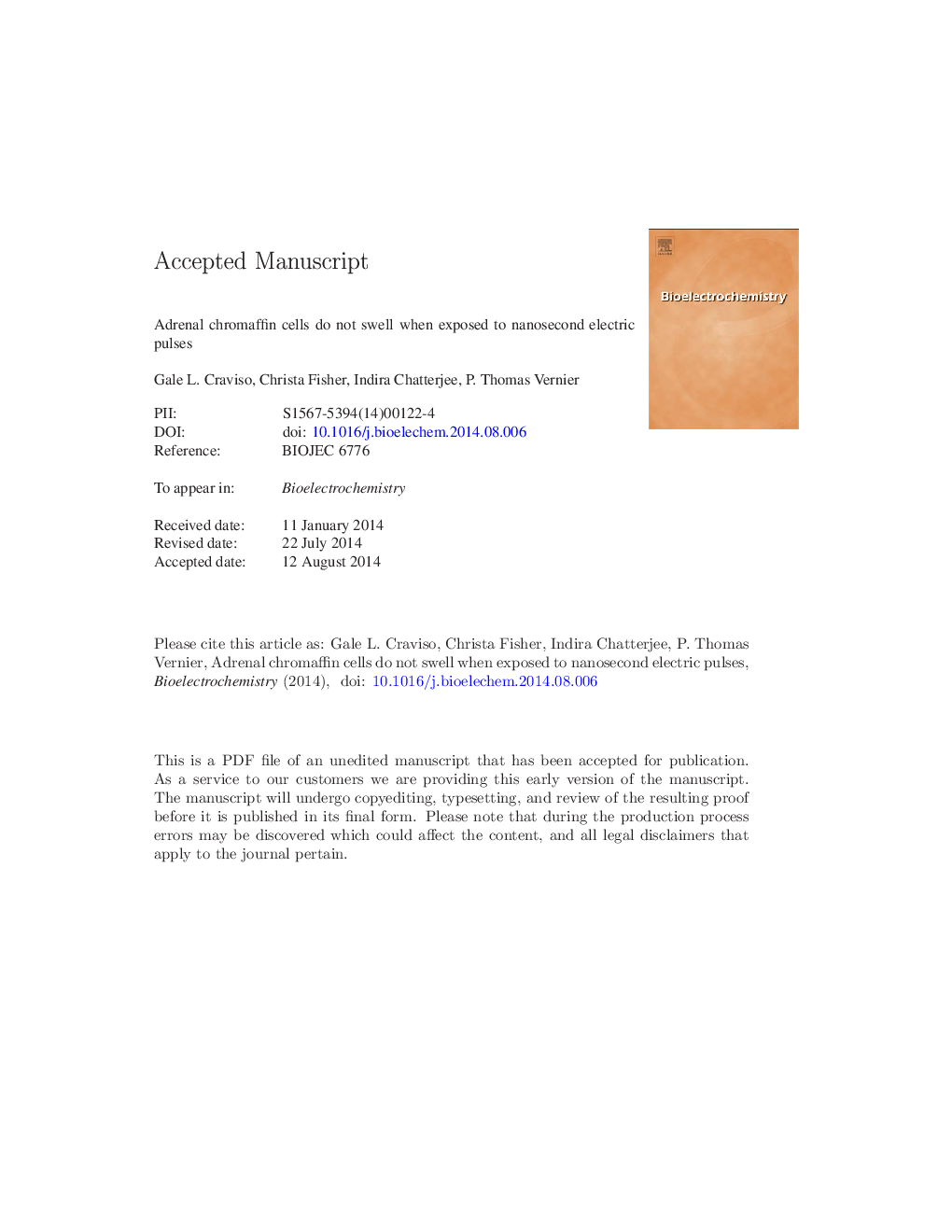| Article ID | Journal | Published Year | Pages | File Type |
|---|---|---|---|---|
| 1267907 | Bioelectrochemistry | 2015 | 18 Pages |
Abstract
High intensity, nanosecond duration electric pulses (NEPs) permeabilize plasma membranes causing osmotic cell swelling that can elicit a wide variety of cellular effects. This study examined the possibility that cell swelling is the mechanism by which 5Â ns NEPs trigger the release of catecholamines from neuroendocrine adrenal chromaffin cells. Swelling was assessed by comparing measurements of cell area obtained from bright field images of the cells before and at 10Â s intervals following exposure of the cells to 5Â ns pulses at a field intensity of 5-6Â MV/m. The results indicated that chromaffin cells do not swell in response to a single pulse or a train of ten pulses delivered at repetition frequencies of 10Â Hz and 1Â kHz. Swelling was also not observed in response to a train of 50 pulses whereas Jurkat T lymphoblast cell area increased 15% on average under the same NEP exposure conditions. These results demonstrating that chromaffin cells do not undergo swelling when exposed to 5Â ns NEPs have important implications regarding the mechanism by which these pulses stimulate the release of catecholamines from these cells, namely that catecholamine secretion is most likely not caused by cell swelling.
Keywords
Related Topics
Physical Sciences and Engineering
Chemistry
Electrochemistry
Authors
Gale L. Craviso, Christa Fisher, Indira Chatterjee, P. Thomas Vernier,
